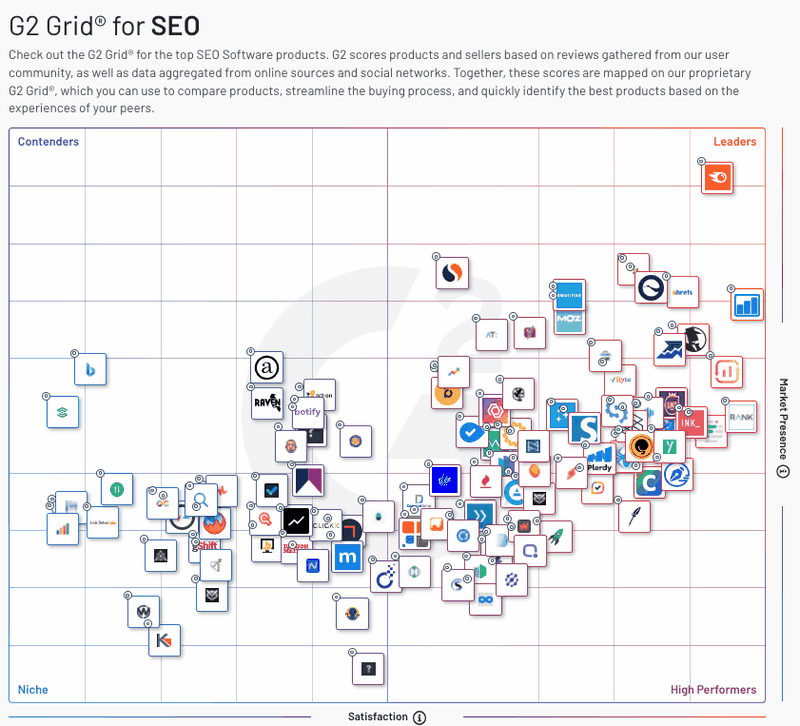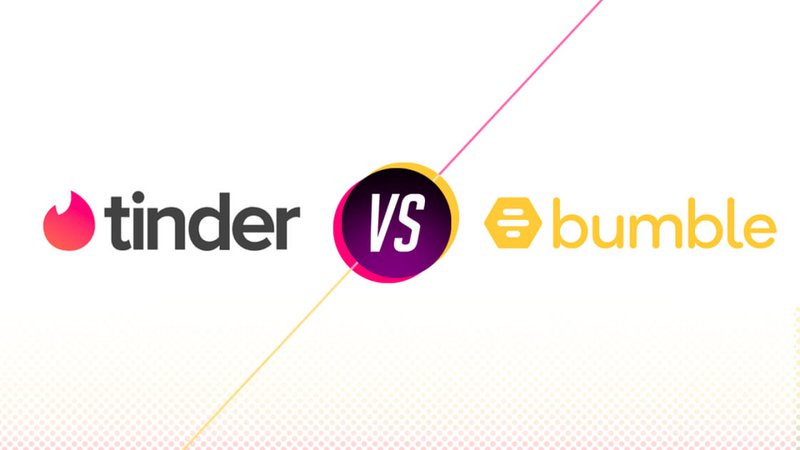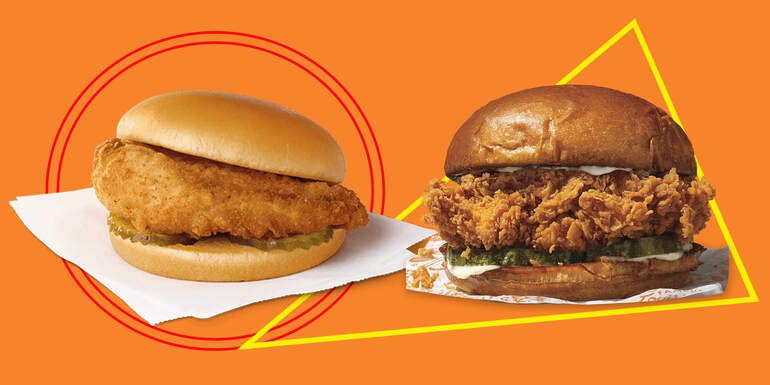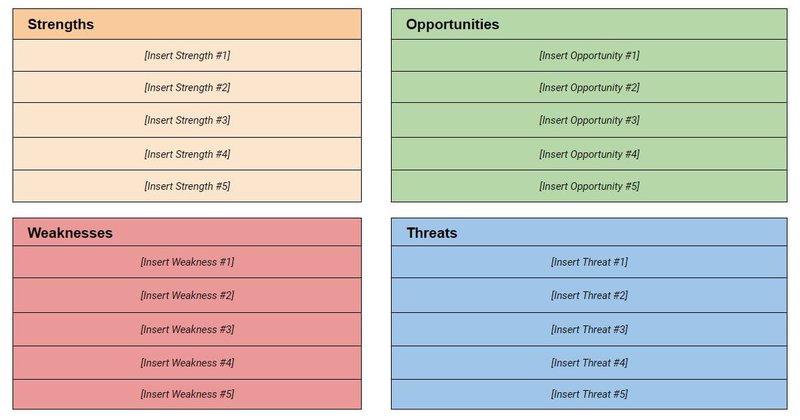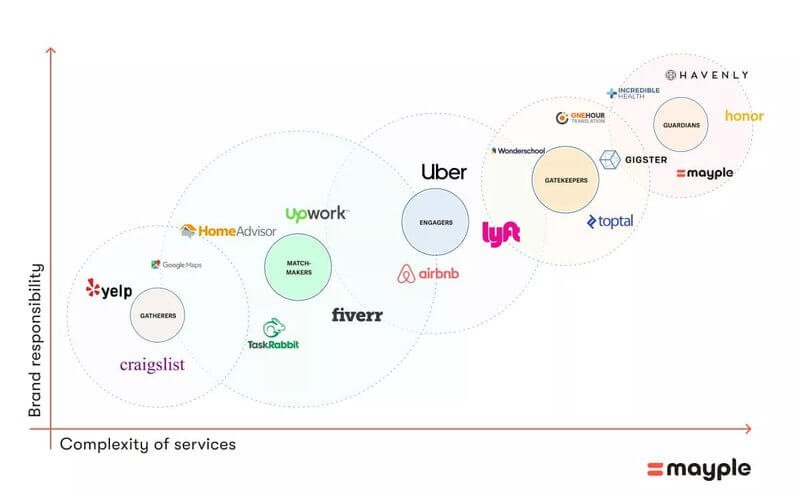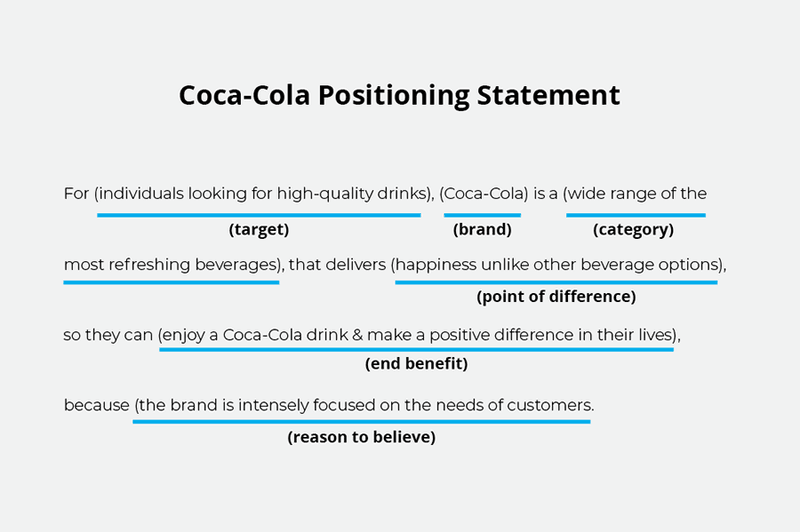The Complete Guide to Positioning in Marketing
Learn how to improve your positioning in marketing. We cover the benefits of positioning, types of positioning, examples, how to create a positioning strategy.
Updated November 7, 2024

There are probably hundreds or even thousands of companies that provide products or services similar to yours. They give similar promises and offer similar benefits, and thus they have a similar position in the mind of the average consumer.
Such a situation makes the consumer wonder why they should go for one company instead of another. They might feel like all the options are the same. As a business owner, your job is to show why your products are not the same as others’ products and why you can provide unique value to customers about your competitors.
The process of positioning is crucial for your marketing strategy and marketing efforts. This guide will help you learn how to distinguish yourself from your competition in the consumers’ minds, thus getting ahead of your competition in a highly competitive market.
What does positioning mean in marketing?
Positioning is one of the 4 P’s of the marketing mix and refers to the process influencing the consumer perception of your brand or a specific product you offer. More specifically, positioning is the process of creating a specific image of your brand with which your target customers will associate you, thus distinguishing you from your competitors.
As Ries & Trout say, “Positioning is not what you do to a product. Positioning is what you do to the mind of the prospect. That is, you position the product in the mind of the prospect.”
Positioning is all about choices - choosing your place in the market. For example, a car manufacturer may emphasize the practicality of its cars, positioning them as quality vehicles for the average consumer instead of costly status symbols. Likewise, a fast food chain may position itself as a palace to get inexpensive and quick meals, unlike high-end restaurants.
On the other hand, a fashion brand may position its clothes as high-end status symbols with completely unique design choices. This would make it stand apart from other clothing manufacturers.
No matter what business you run, positioning is invaluable for showing consumers why they should pick your brand out of all the others. You need to create a distinct image and make it stick in your consumers’ minds to have a lasting impact and ensure they don’t forget you and the value you bring.
Positioning is somewhat similar to processes such as branding, value proposition, messaging, and differentiation. However, there are some key differences that we need to highlight to understand better what positioning is.
Positioning vs. branding
Branding refers to creating a unique logo, tagline, or slogan to create an original brand image. You can think of the McDonald’s logo and the recognizable “I’m lovin’ it” slogan. These two elements are unique to the company and instantly recognizable.
Positioning is similar, but its main focus is on creating a specific image or idea of your brand in your customers’ minds. For example, you might try to position your company’s products as more practical when compared to your competitors.
Positioning vs. value proposition
Positioning can also be confused with a value proposition. A value proposition is a promise you make to your customers regarding the benefits, use, and quality of your products or services. So a value proposition might be a part of the positioning, but it is not the same process.
Positioning vs. messaging
While positioning involves outlining the uniqueness of your products and services in comparison to your competitors, messaging is when you communicate how you’ll fulfill your promises to your target audience.
Positioning vs. differentiation
Since positioning is to a great extent about how different your product is from the competition, it might be easy to confuse it with differentiation. However, differentiation is a tactic you use to make a specific offer or product stand out and get more interest from the target audience.
The benefits of positioning in marketing
Now that we know what positioning is, we should examine its benefits in greater detail. Here are all the benefits of having good positioning.
Have a stronger position in the market
When you create a positive image of your company in consumers’ minds and associate your business with a certain value, you’ll attract more customers.
A successful positioning campaign will cement your position not only in consumers’ minds but also in the target market. The goal is to have consumers believe that your products and services provide more value than those of your competitors.
Increase sales
Improved positioning can lead to greater sales. Having a relevant offer and communicating information about your company effectively may allow you to get a bigger piece of your existing market and expand to new markets.
Better market to your target audience
Positioning also allows you to reach out to your target audience and better capture their imagination. This will allow you to market your products and services to your target buyers better. You will be able to address their needs and pain points effectively, thus turning them into more loyal customers.
Build a stronger brand
Positioning goes hand in hand with branding. While branding will give you a recognizable logo and slogan, positioning will ensure that your brand is associated with a certain value and that your (potential) customers see it in a certain way. And together they are part of an overall branding strategy.
You might position your business as one that provides convenience at a reasonable price. Such clear positioning will result in a strong brand because you’ll show that you have a clear focus and target demographic. Customers who prefer this kind of service or goods will know where to look for them.
Every brand must have a specific focus. A brand that tries to cater to everyone will end up catering to no one. And a great branding freelancer will be able to help you take your first-party data and create a brand that attracts your ideal customer.
Types of positioning in marketing
There are different types of positioning depending on what you want to focus on in your business. Let’s look at each one in detail.
Price
For most consumers, a product’s price is a determining factor when they have to decide if they’ll buy something or not. A company that offers affordable products with reasonable quality will most likely have lots of success with customers if it positions itself as a low-cost brand with decent products.
A good example of this is Dollar Shave Club compared to Gillette. Even though Gillette was the leading company in the razor blade market, Dollar Shave Club took over a decent chunk of their market due to their unusually low prices and good quality.
The cheapest razor cartridge from Dollar Shave Club is only $0.20, which swayed many customers to their side. This enabled Dollar Shave Club to successfully take on a giant like Gillette. They have positioned their business around a competitive pricing strategy and it worked. They were acquired by Unilever in 2016 for a whopping $1 billion.
Quality
Quality is the determining factor for companies that sell products in the same price range. Think of the reason people buy Volvos - they are more expensive but are significantly better quality-wise than other cars. Consumers for whom product price is not an issue will want to get the highest possible quality.
Chipotle and Taco Bell are good examples of this. Chipotle was able to get a good part of the market share when it focused on quality instead of price.
Competitors
When positioning your brand, you must also emphasize the ways in which you’re better than your competition. This can refer to your superior customer service, top-notch experts that you hire, or better standards of production.
Convenience
Sometimes your biggest strength might be the convenience you offer to your customers. It can refer to the sheer number of your stores or office, accessibility, multiple-platform support, or ease of use of your application(s).
A convenience-based positioning strategy attracts busy customers, who are often willing to pay extra to save time. And while it can get you greater profits, it can also cost more. For example, if you’re offering a mobile app and a desktop version of the app, you can get more customers, but you’ll need to spend more on development.
Customer needs
If you want to get and retain customers, you must be ready to quickly and efficiently meet their needs. Consumers are generally happy to pay a premium price if they know that any problem they might have with the product will be solved quickly and efficiently.
On the other hand, If consumers perceive you as cold and disinterested, they’ll rather opt for someone else, even if your goods or services are top-notch.
Positioning your company around your customer and their needs is a powerful strategy that helps cement your position in the market.
Product use
Another thing you can focus on is the intended use of your product(s) and its characteristics. It’s impossible to create products that customers can use for everything and in every situation, so you have to focus on a particular characteristic and use it to stand out.
For example, Volvo emphasizes the safety of its vehicles, and drivers who prioritize that characteristic know where to turn when buying a car. On the other hand, drivers that prefer reliability will turn to Toyota, as the company positions itself as a manufacturer of reliable cars.
Examples of positioning in marketing
Now that you know the different types of positioning here are a few great examples from the world’s most famous brands. These examples will deepen your understanding of positioning and they might give you some useful ideas you can use in your marketing efforts.
1. Tinder and Bumble
Tinder and Bumble are two of the biggest names in the dating industry and they rely on different positioning strategies to attract new users and retain the ones that they have.
Tinder tries to position itself as a leader in the industry by drawing attention to its large number of users (75 million and counting) and its long presence in the market. That’s an important factor for potential users who would like to have a wide pool of potential dating partners.
On the other hand, Bumble uses its unconventional approach to position itself as a game changer in the industry. Bumble is specific because it only lets women initiate conversations, and it also offers users to look for friendships and business connections.
Therefore, Bumble relies on differentiation to stand out from the competition and present itself as an innovative alternative to its competition.
2. Apple Music and Spotify
Apple Music and Spotify are bitter rivals when it comes to music streaming. Even though their services are similar, their positioning strategies are quite different.
Spotify relies on a price-based strategy. While it has a premium option that makes it very similar to Apple Music, it also offers a free plan that attracts many users. Additionally, it offers a great degree of personalization that allows users to enjoy their favorite music and discover new artists with only a few clicks.
Apple Music focuses on its status as a prestigious service. It emphasizes its impressive catalog of 60 million songs and exclusive features such as on-screen lyrics and music videos, which Spotify offers for only a few songs.
3. Walmart and Target
The rivalry between Target and Walmart can also give us a great example of different positioning strategies. While both chains offer similar products and prices, their positioning is vastly different.
Walmart competes on price and offers the best-priced goods in the market. This has some drawbacks and it has earned them an interesting reputation but customers know that if they want to get the best deals they should go to Walmart.
On the other hand, Target focuses more on customer experience and product quality. Target stores tend to be better organized, and the customers find the experience much more enjoyable than the one they might get at Walmart.
4. Popeyes vs. Chick-Fil-A
Both companies serve tasty fried chicken but with very different approaches. Popeyes focuses on differentiation, while Chick-Fil-A focuses on its quality and customer service.
Popeyes’ main focus is on home style, Cajun recipes, and food that are different from many other similar chains. This allows them to stand out from the crowd and be recognizable for their food.
Chick-Fil-A emphasizes the quality and general appeal of its food to position itself. However, their strategy is hybrid because they also rely on customer service. They don’t brag about it, but they let their employees’ actions speak for themselves, so they’re recognized as a place where customers feel well-treated.
How to create an effective positioning strategy
Here is a step-by-step process for creating an effective market positioning strategy for your business.
1. Define your current position
Before you dive deep into the positioning process, you must first determine your current position in the market. Do prospective customers see your products as just another thing on the market, or do they see them as something unique? Conduct some research to determine how your products are perceived by your target audience.
After that, you must determine who your potential and ideal customers are and how you can connect to the typical buyer persona. If you have a wide range of products, segmenting your customers is also a good idea. This will help you create campaigns that cater to specific market segments.
2. Analyze your competitors
Competitor analysis is just as important as analyzing your own position in the target market. Conduct a SWOT analysis to see how you stack up against your competitors. Identify the weaknesses you need to address, as well as the strengths you should emphasize.
Pro tip: take note of your competitors' marketing channels, tactics, and advertising campaigns, and record all of those in your marketing plan. Refer back when you need fresh ideas of what works in your target market.
3. Create a positioning map
Positioning maps are a visual representation of how you compare to your competition based on certain attributes and values they find important. It’s a super helpful tool that helps you see a clear picture of the strengths and weaknesses you and your competitors have.
4. Tweak your current position
Once you know what you need to work on, you can start tweaking your position. Emphasize your strengths compared to your competitors and convince your potential customers that your business is the place to go if they’re looking for a certain value.
This value should be the one you’ve identified as your strong point and decided to push forward as a factor that differentiates you from the competition. This should also be the value you associate with your customers’ needs.
5. Create a positioning statement
Your positioning statement should be one or two sentences long and briefly state your mission and goals. It should emphasize your uniqueness compared to your competition.
It consists of three elements - what you do, who your target audience is, and the greatest benefit that your product provides.
For example, here’s a compelling positioning statement from Amazon: “Our vision is to be the Earth’s most customer-centric company, to build a place where people can come to find and discover anything they might want to buy online.”
This statement summarizes their goals and proof of the statement has become self-evident. Amazon offers basically anything you might want to buy, it’s all available at the click of the mouse, and it's delivered to your doorstep.
6. Create a tagline
A tagline is better known as a slogan. A good slogan can be almost synonymous with your brand and will do an excellent job showing your customers what they can expect from your company.
We’re all aware of slogans such as “Just do it” from Nike or “Because you’re worth it” from L’Oreal. Those slogans are instantly recognizable and tell consumers exactly what they can expect from the companies.
7. Test your marketing positioning
Once you’ve prepared everything essential for positioning, it’s time to put it to the test. It takes time until your customers’ perception of your business changes into what you want it to be. This allows you to track the progress of your positioning campaign and make changes.
Don’t expect your positioning campaign to be effective immediately. It’s almost impossible to do everything perfectly right away, so embrace the effort and know that it’s a process.
Looking to position your company?
If you’re serious about standing out and conquering your competition, you need to have a successful positioning strategy.
It could seem daunting but you don’t have to do it alone. Hire the perfect marketing consultant through Mayple and get the job done. Get started now and start working on a killer positioning plan!
FAQs
What is the meaning of market positioning?
Market positioning refers to shaping the consumer perception of your brand, company, or products. Brands position themselves by creating an image or identity of the brand or product so that consumers view it in a certain way. It’s an important part of your marketing mix and serves to strengthen your brand and improve sales.
What is the importance of market positioning?
The objective of market positioning is to stand out from the competitors and show your uniqueness to the customers. It associates your company with certain values and characteristics, and people will know they should turn to you if they’re looking for those values and characteristics.
It's important for companies that want to develop better messaging for their target segment, improve their current market position, and increase sales.
What is meant by positioning in marketing?
Positioning is how consumers see your brand. In other words, it refers to the values you want your customer base to associate you with. It can also refer to how consumers see your product in relation to other products on the market. Good positioning makes your product unique in the eyes of your target segment and helps display the benefit it provides for them.
What are the 5 positioning strategies?
The five positioning strategies are: quality positioning, convenience positioning, customer needs positioning, product positioning, and competitive positioning.
What are the 4 types of product positioning?
There are four types of product positioning: price-based positioning, lifestyle-based positioning, characteristics-based positioning, and quality-based positioning. You can also use a combination of two types of product positioning together to make your product stand out in the market.
What is an example of positioning?
Volvo is a good example of positioning in the car industry. The company emphasizes the safety of its vehicles, so consumers who prioritize that characteristic know that Volvo is the best option for them.
Why is positioning important?
Positioning helps you boost sales, attract your target audience, and create a unique image of your company. This makes you a recognizable force in the target market and cements your position in your customers’ minds.
What are the 4 Cs of positioning?
The four Cs of positioning are clarity, consistency, competitiveness, and credibility. They tell what your main focus should be when working on your positioning. They were created by David Jobber and John Fahy in their book "Foundations of Marketing" (2009).
